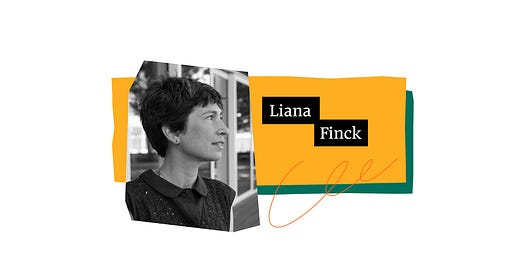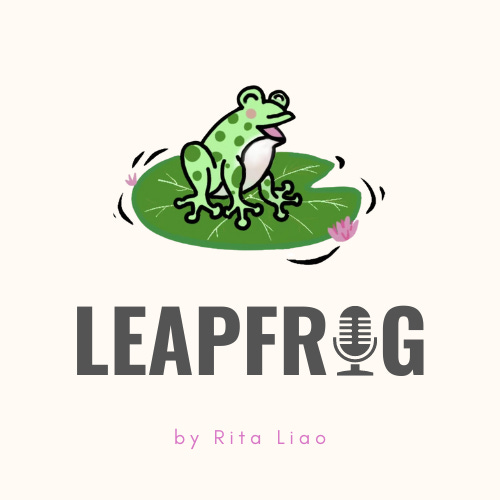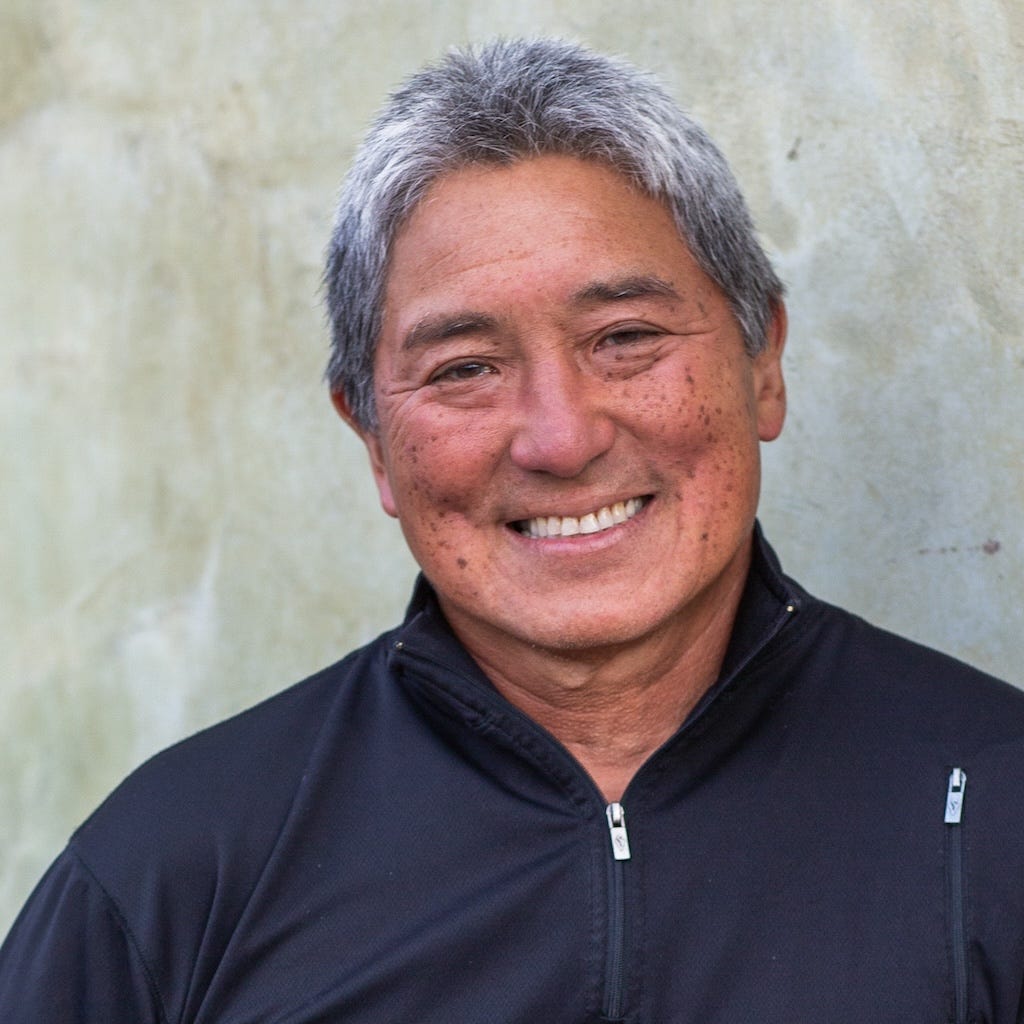This week’s digest was curated by , a cartoonist for The New Yorker and the author, most recently, of an illustrated memoir/parody-of-a-parenting-manual called How to Baby and a children’s book called You Broke It!, about things we say to our kids. Liana has been making her Substack for exactly two years. Every week, Liana posts 10 cartoons for free and a longer comic for paid subscribers. Her favorite subjects include how on earth to interact with others without (a) being weird or (b) making them angry, tricking your wily husband (who did not sign off on being described that way) into an equitable balance of household labor, wrangling babies, watching babies become toddlers and toddlers become kids, being formerly shy, being secretly still shy, and big feelings. You can subscribe here.
I was asked to edit Substack Reads this week, and I️ delightedly said yes. The awkward thing (I️ find that there is always an awkward thing) is that I️ don’t read newsletters. To be fair, I️ also don’t watch TV or movies, listen to music, look at art, or read books—anymore, I mean. Before I️ became a working artist, I️ took stuff in like it was my job. I’m embarrassed about this and I️ don’t even tell my friends or family, who keep recommending books and asking me if I’ve seen TV shows, and I always say, “Yes, such a great show.” I️ subscribe to a ton of newsletters; I️ just don’t read them. So this was my chance to explore some of the newsletters I’ve been wanting to for years. I’ve included some of those here. A few others are recommendations from friends and readers.
It turns out there are different reasons people write newsletters. Some are like confessional diaries, some are like magazine articles, some are for building community, some are life updates. But you probably know this already. I’ve chosen a variety here, each very personal in its own way.

TALKING SHOP
Hoboken old woman
“This is a traditional holiday-mailing-type newsletter in which Roman Muradov, who is brilliant and does a lot of different things—design, brand work, book illustration, comics, comedy—tells you what he’s been working on lately, and how. For me, it contains all the joy of talking shop with another maker—good advice, the joy of figuring out techniques. It’s generous. There are visuals, too: short comics, illustrations, excerpts from longer works. Muradov has a really good, playful eye and the kind of solid understanding of historic styles no one carries around anymore. I’m a particular fan of his Blendr movies. They’re Gumby-level good. He’s erudite, playful, and surprising, and I️ recommend you get to know him.”
—
inHere’s a useful tip, especially for print. If you’re dissatisfied with the softness of the brushes, set your dual brush blend mode to hard mix, which creates pixel-perfect edges, pretty much like a hi-res bitmap scan.
LITERARY, OFF-KILTER TRUTH
Kafka and Brod
“I️’m a longtime fan of Elif Batuman’s. Her perceptions are acute, weird, and funny. They remind me of my own perceptions, but clearer and sharper. A dream feeling of having my thoughts thought for me. I started reading her New Yorker articles when I️ was a kid (she was a kid too, actually), many of which were about writers I loved and didn’t think anyone else loved, and am an awed admirer of her books. I️ chose this particular Substack post of hers because it’s her most recent; also because it’s about Kafka. I️ took a scholarly class on his writing in college (that’s not why I️ love him, I️ already loved him, I still love him) and had to come up with a thesis as to what made him so weird and tortured: Was it his sexuality? An eating disorder? Capitalism? My indignant thesis was “He’s not tortured, he’s just __, like me.” I️ couldn’t name it. The teacher thought I️ was weird and tortured too and gave me a relatively bad grade. Elif’s post is about Kafka’s friendship with his loyal, enigmatic, often-disliked-by-Kafka’s-readers friend Max Brod, although I can’t tell you in words what she says about him, because she says it perfectly. Lonely people like Kafka because he was lonely. It’s disconcerting to think of him having a friend.”
—
inEveryone who loves Kafka has to be grateful to Brod. Literally everything we know of Kafka, all of his writing, comes to us via Brod.
But is gratitude always a pleasant feeling?
In 2010, when I was doing all the interviews, I kept encountering ambient waves of animosity towards Brod. Some of the animosity was relatively overt and pragmatic, and was related to how this whole legal mess had been caused by Brod—why hadn’t he put the papers in an archive, instead of leaving them to his secretary?
But there was also a less clearly stated, more emotional, and more diffuse annoyance at Brod—for getting in the way of “our” relationship with Kafka. And that’s one of the questions I want to ask today: What does it mean to try to get past Brod—to get to the authentic, unmediated Kafka?
ART AND PEOPLE
Pencil skills, part 2
“Wendy MacNaughton is what I’d call a natural Substacker. She is a visual journalist (aka a journalist who draws) who also has a real talent for connecting with people, understanding others, and creating community. I️ first encountered her work in her illustrations of Samin Nosrat’s delicious, meta cookbook Salt, Fat, Acid, Heat. They’re an integral part of the book—not attention-grabbing but load-bearing: they convey necessary information and deliver emotion. During the pandemic, Wendy started an online drawing workshop for children, which I️ think made a lot of kids and a lot of parents relatively okay when they wouldn’t have otherwise been. Her Substack, DrawTogether, is now the locus of that movement. It’s part informational, part community, always playful, always sincere. The post I’m reading now is about pencil sharpening. It’s making me smile (a tall order these days). It’s both gentle and fascinating (also an unusual combination these days, and one we can all use more of).”
—
inSharpeners produce either sharper long or short points. Not both. Both hand and machine sharpeners can produce these lengths, so just make sure you know which one you are buying when you buy a sharpener. (Hint: If it doesn’t say “long point,” it’s probably short. Short is standard. More family-friendly.)
Shorter points have a strong advantage: they are stronger and resist breakage more. Disadvantage: the tip is stubby and doesn’t give you much coverage when drawing on the side of the graphite. Long points have two advantages: they stay sharp for longer, and they have a larger area of exposed graphite, which allows for more varied mark making. Disadvantage: they break more easily. Only YOU know what’s right for you.
INK, EXISTENCE
Be unfocussed
“Speaking of paying attention to your surroundings, Jason Logan is an illustrator-turned-natural-ink-maker who goes out foraging for things to make ink out of, boils them up, and makes astonishing colors and textures. He has a book called Make Ink and a company called the Toronto Ink Company. Like Logan’s ink, his newsletter is an interesting mix of vivid and unexpected. It’s part diary—about his work and life and week—and part internal, about what he thinks it is to exist this week, and how to do it. He’s got the eye of an art director or filmmaker, juxtaposing a tree he’s seen with a feeling he’s had with a book he’s read. A way of seeing that is simultaneously big and splashy and also very detailed, with some blank spaces to let your mind wander and breathe. A way of thinking that does one good to inhabit for a moment.”
—Jason Logan,
inI’ve always loved spending time with photographers, not because of the way they capture moments or compose shots or manipulate light and angles to construct portraits. It’s not because of the making at all but because of the way photographers can peer into. The way they slow themselves to allow themselves to be pulled into visual situations. Or speed themselves up to slip between moments invisible to others. When I hang out with photographers, the world feels re-enchanted. Full of portals. People talk about seeing the world through new eyes, about the artist’s vision. But I don’t want to see new things. I want to get in closer to the everyday things of my stultified world. I want to get into the skin of the ordinary. And I think I may have found a new method for doing this.
NOT EXACTLY COMICS
Stories are boring, read my fables instead
“Lord Birthday was one of the good parts of Instagram, back when we were all into that. Now we’re not, and he’s here. He makes pictures and lists and sometimes other things. They’re absurdist, expansive, and kind. I like them the way I like poetry, and the way I like comedy, which I think is the same way. In a world where very little surprises me, these do. Enough said. See for yourself.”
—
inLet’s be honest: stories are boring. They are so terrible and so boring, especially when they are good. We have too many of them. We can barely keep up. There are too many characters. So much plot. So much talking. Events. Twists. Turns. More talking. Character development. A car blows up. Somebody cries. Deception. A dog is running around. Somebody falls out a window. My god. What the CRUD is going on?? I will never do this to you, reader. I will never make you read a story. You can have my honest word on it.
PROPRIETY, BUT MAKE IT LOVELY
Emily Post’s etiquette tip
“I️ confessed to you that I️ don’t take in art or music or books or newsletters. I️ do listen to podcasts all day long while I️ work, and have some intense one-sided friendships (the best kind of friendship, in my opinion) with their hosts. One of my favorites is Awesome Etiquette, recorded by two great-grandchildren of Emily Post—first cousins named Lizzie Post and Daniel Post Senning. It’s got all the joy of gossip without anything remotely mean—a cross between Jane Austen and Mr. Rogers. If that’s too confusing a description, here’s another try: it’s like Curb Your Enthusiasm but everyone is smiling kindly at each other. Okay, forget it. Just check it out for yourself. The Substack includes an extra segment of the podcast for paying members and entertaining snippets of writing, including excerpts from Emily Post herself, who was surprisingly funny—and surprisingly warm.”
—
and inThe Tip
Play the role of host and guest equally in your friendships. If you find yourself always someone’s guest, make an effort to invite your friend and do some hosting, even if it’s just initiating an afternoon walk.
COMIX
An interview with Stan Mack
“Autobiographix was recommended to me when I️ put out word that I’d be curating this feature. It’s a series of interviews with nonfiction-comics makers. The latest issue blew me away, and I️ can’t wait to read more. It’s an interview with Stan Mack, who had a Village Voice strip back in the day, worked as an art director, and was/is generally in the newspaper and advertising worlds (he’s got a book coming out with Fantagraphics). I’d never heard of him before and I’m very glad I️ have now. This is a good reason to read Substacks—it’s like browsing in a record store or leafing through a paper magazine, coming across things you wouldn’t have otherwise. I think I’ll keep doing it.”
—
and inCan you tell us a little bit about how you choose the vignettes and real-life events to feature in your comics?
As I began my Stan Mack’s Real Life Funnies comic in 1974, the “Me Decade”—a phrase coined by Tom Wolfe—had begun. People were turning away from the political idealism of the ’60s toward a search for personal fulfillment, spiritual enlightenment, and self-gratification: all grist for humor. It was the time of the women’s movement, sexual experimentation, mind-altering psychedelics, and a vibrant singles scene. The city was brimming over with opportunities for me and my pen. I went everywhere I could gain access; I learned to fade in, to pretend, to listen without judging, to quietly write down and sketch in my little notebook. Or on anything handy like a napkin.
Recently launched
Coming soon
Congratulations to the following writers celebrating publication.
shares her road to finding a literary agent:’s latest novel, One Year Ago in Spain, is available for preorder:Noteworthy
Inspired by the writers featured in Substack Reads? Writing on your own Substack is just a few clicks away:
Substack Reads is a weekly roundup of writing, ideas, art, and audio from the world of Substack. Posts are recommended by staff and readers, and this week’s edition was curated by , who writes on Substack. You can also follow Liana on Instagram and X. Substack Reads is edited from Substack’s U.K. outpost by .
Got a Substack post to recommend? Tell us about it in the comments.





























Love this round up. Will be checking some of these out. You asked for recommendations - well, I'm new to this space and would love some eyes on my Substack 😉.
https://open.substack.com/pub/tomtracybooks/p/the-story-begins-here?utm_source=share&utm_medium=android&r=1pblm2
I was looking for a reason to get back into the studio and paint. Now I have the opposite — lots of interesting things to READ and avoid the easel (again).